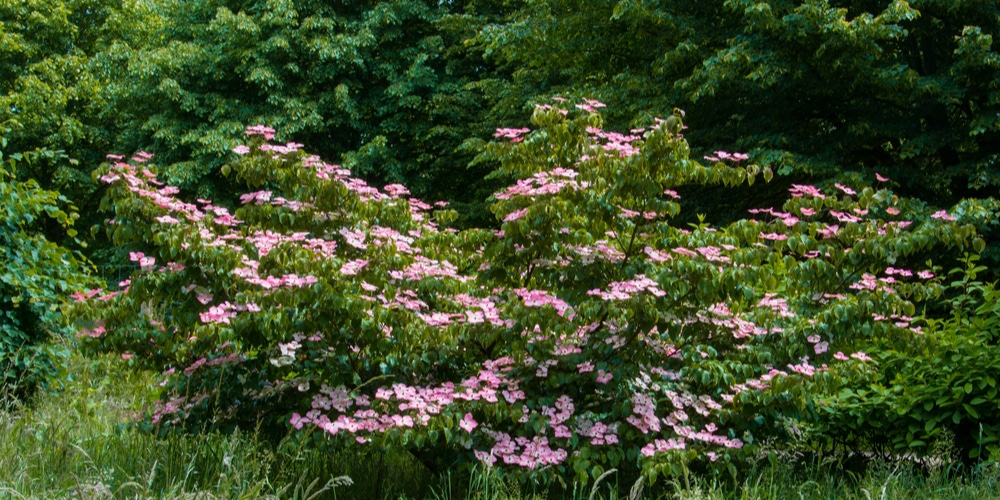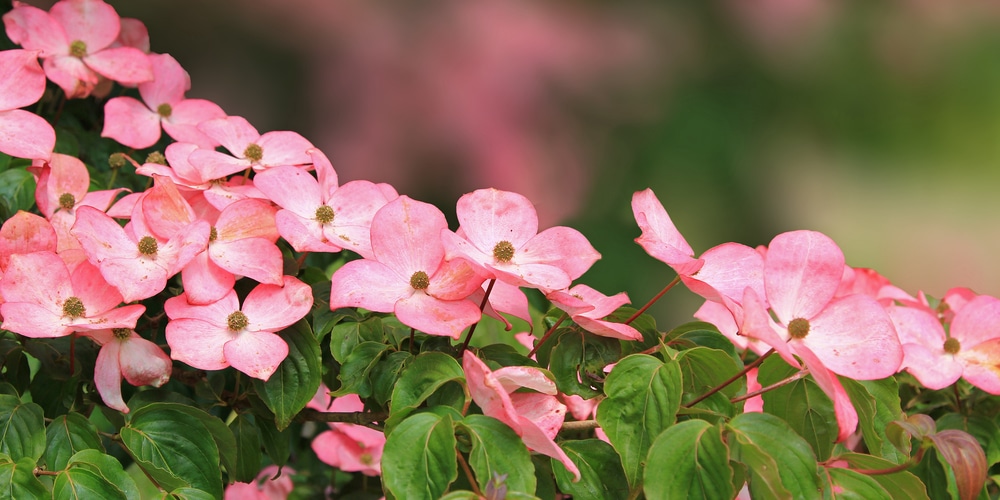Also known as Japanese or Chinese dogwood, Kousa dogwood is a great landscaping dogwood variety. It has several species that thrive in different climates, but the well-known is the dwarf pink kousa dogwood.
Its pink pastels are among the many notable flowers that signify the arrival of the warm spring season. The dwarf pink kousa dogwood variety also benefits landscaping as it adds color to your yard in fall by turning its foliage from green to attractive shiny purple.

The flowers of this wonderful plant slowly mature into berries that attract birds and butterflies to cheer up your yard. With all its benefits, you may wish to add them to your garden’s array of beauty or help in landscaping.
However, before deciding to plant dwarf pink kousa dogwood, you need to understand the kind of care it needs and what conditions make it grow best and healthily. This article will cover basic care tips for dwarf pink kousa dogwood to help you nurture your plants in the best way.
Caring for pink kousa dogwood
The dwarf pink kousa dogwood produces four brats with a spherical flower head, which usually appear as small bushes when mature. Their flowers have rich pink margins along with their soft pink pointed bracts. Despite their flower color, they require similar care practices as other dogwoods. Here are the basic maintenance tips for dwarf pink kousa dogwood
1. Adequately prepare the soil
If you wish to see your crops thrive, it is important to start with selecting the right place and preparing the planting site adequately. For growing kousa dogwood, select a large site to allow the dogwood to spread and achieve its natural size. Clear the area and remove any unwanted grasses and weeds that may carry away the much space needed for your plants to thrive.
2. Soil state
Like most trees, dwarf dogwoods require good soils that can support their healthy growth. Acidic soils are the best for growing dogwoods. The soils should be relatively fertile and well-drained. You can evenly spread well-rotted manure or compost on the planting site and amend well with the soil before planting.
3. Amount of sunlight
Dogwoods tolerate growing in full sun to partial shade, but it is more advisable to plant them in an area with full sun for better flowering. Depending on the climate conditions of your area, you may have to select shady or sunny sports, however.
In hot and dry areas, partial shades are better as the shaded soil can hold water for more time than the open and exposed soil. Generally, kousa varieties need full sun and an adequate water supply.
4. Watering
Whether you plant in full or partial sun, kousa dogwoods require water right away from when the root ball develops into the ground until they mature. You may plant the dogwood near a water source to reduce watering intervals. During the first few days of planting, apply water until the soil is damp.
Do this for three or four months until the roots are fully established in the soil. Afterward, you can water three times every week, especially in dry climate regions. Looking at the leaves, you may know if your plants are getting less water.
If the leaves become light in color and brittle, then you need to water more. On the contrary, if the leaves become gray and start drooping, it is a sign of overwatering, so change your watering routine.
5. Mulching
Add a layer of mulch around the base of your kousa dogwood tree to help hold moisture in the soil. Always leave space around one inch to the trunk to avoid root and trunk rot.
6. Pruning
Prune the dwarf trees in late winter or early spring when they are mostly dormant. You can also prune whenever you notice diseases like powdery mildew and dogwood anthracnose on some branches. In such a situation, only the affected branches should be pruned back.
7. Control pests
Use natural insecticides on any part of the tree infested with pests. The dogwood borer is the most common insect, which can damage the entire tree if not controlled. You can also try and avoid damaging the bark of your tree to help set it free from insects and pests.
Conclusion
Dwarf pink kousa dogwoods are flowering trees and shrubs for landscaping that can thrive in hot and cool climates when provided with adequate water. They prefer acidic and well-drained, so consider meeting all their requirement to successfully grow them in your yard.
